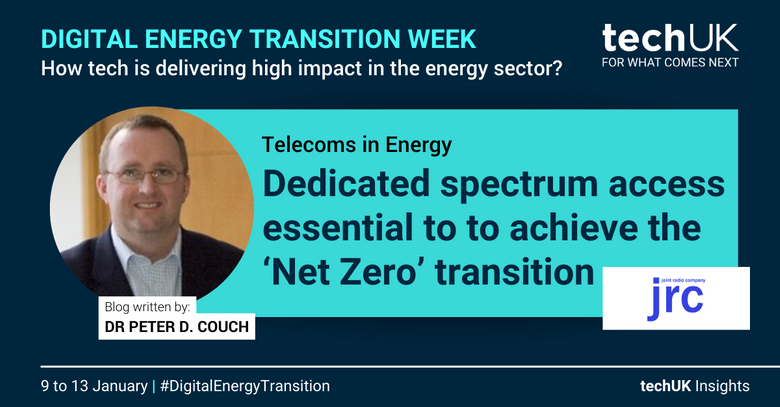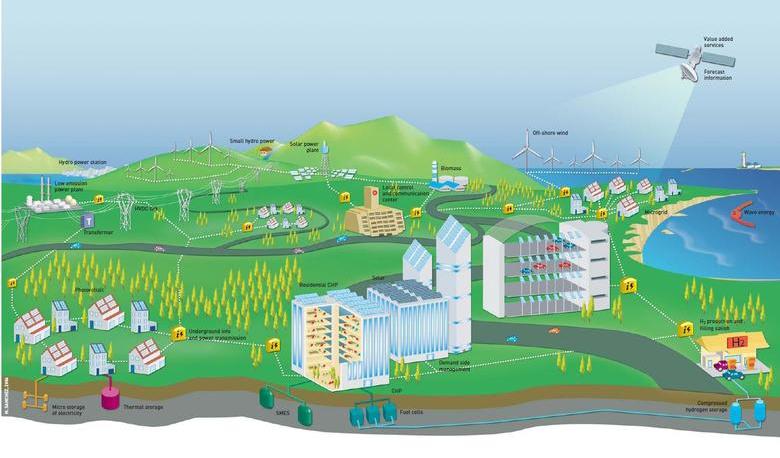The ‘Net Zero’ Transition and the need for enhanced visibility and control of Energy Network Assets (Guest blog by JRC)

As the UK’s energy networks become more dynamic from a supply and demand perspective – incorporating distributed generation and storage alongside high energy-consumption but low carbon emitting technologies like electric vehicles and heat pumps – there is an increased need for active network control.
For electricity this will require control components within the medium and low voltage layers – effectively turning the monitoring and control (and connectivity) hierarchy upside down, as such the future scenario will require higher bandwidth connections to a much larger number (100 x) of distributed assets each of which will play a critical part in the operational integrity of the network.
Within the Gas networks additional capability is required as hydrogen and other green gases are added to the mix of the energy system. The significant increase in the number of connected assets will result in a dramatic increase in data flows necessary to operate the energy system in real time, requiring a corresponding expansion in the need for connectivity including use of dedicated radio spectrum-based solutions.
Introduction
UK Energy Networks are undertaking a transition from centralised energy generation to a model where energy generation is distributed via a larger and more diverse range of generation sources resulting in a shift from a passive to an active or “Smart Grid” where energy flows in two directions. This shift to an active and distributed grid demands a greater level of intelligence and interconnectivity (sensors, communications and control) and automation across the entire distribution network, in order to ensure co-ordination, efficiency, responsiveness, safety, security and resilience of supply.
Figure: A vision of the new Smart Grid infrastructure with greater diversity and interconnectivity

Source: European Commission
The need for Enhanced Operational Control is a product of the Change in the Supply and Demand Context
Historically, energy networks have largely been passive composed of only a small number of active control components at the High Voltage layer (i.e. above 33,000 volts). The operational telecommunications systems used in these systems have typically been narrowband, employing a mixture of wired and wireless connectivity solutions. In the case of wireless connectivity, a relatively limited amount of radio spectrum has been utilised to date to support these legacy needs.
The centralised or ‘top down’ approach of energy supply required no visibility for control purposes of what was happening at the edges of the network (Low Voltage - LV) and relatively limited visibility at Medium Voltage (MV). However, as the UK’s energy networks have become more dynamic both from a supply and demand perspective – incorporating distributed generation and storage alongside the adoption of high energy-consumption but low carbon emitting technologies like electric vehicles and heat pumps – there is an increased need for active control.
For electricity this will require control components within the medium and low voltage layers – effectively turning the monitoring and control (and connectivity) hierarchy upside down, i.e. rather than requiring connectivity at low data rate to a small number of very large, centralised, critical assets., t
The future scenario will require higher bandwidth connections to a much larger number (100 x) of distributed assets each of which will play a critical part in the future network (individually & collectively) with the number of wireless connections expected to grow significantly leveraging their cost effectiveness and flexibility.
Within the Gas networks additional capability is required as hydrogen and other green gases are added to the mix of the energy system.
This significant increase in the number of connected assets will result in a dramatic increase in data flows necessary to operate the energy system in real time, requiring a corresponding expansion in the need for connectivity including use of radio spectrum-based solutions. It is estimated that the typical data requirement could be in the range 0.1 to 1 Mb/s per device.
Figure: IEEE graphic of the Smart Grid Power Layer overlaid on the telecoms layer

Source: IEEE
Enabling a Dynamic Energy Supply Solution through enhanced Operational Telecommunications Capability
Wireless based communication systems have always been a critical component of the operational Command and Control systems of the Energy Networks. The need for enhanced operational communications solutions has been under review for the past 5 years or more. and wWork has been taking place with Ofcom through its Strategic Review of Utility Operators Spectrum Requirements project which has been contributed to by Joint Radio Company1 and ENA-STG2.
Ofcom’s study is exploring the spectrum access needs of the utility operators and considering what regulatory interventions may be required to enable efficient energy networks that meet the government’s future policy objectives. It is also important to note that Government departments, DCMS and BEIS, are actively engaged in responding to the developing needs of the Energy Network Operators through the ‘Net Zero’ transition.
One common theme that regularly needs to be addressed when exploring the needs of the Energy Network Operators with policy makers is the limitations3 of publicly available communications services to address the critical operational needs of the sector, i.e. resilience to mains power failure, reach, guaranteed QoS and availability, etc.
To this end JRC commissioned research by Gemserv4 to establish the potential benefits and costs of an enhanced operational control solution via three different approaches: fibre, public cellular and private wireless. The Gemserv analysis clearly demonstrates the private wireless solution to be the most cost effective and capable option at a cost one twelfth of the benefit that would be realised – an annual net saving of £25 on every household’s energy bills.
JRC and the ENA-STG are committed to working closely with Policy Makers to ensure that the appropriate Policy Interventions are enabled, e.g. dedicated spectrum access to facilitate the ‘Net Zero’ transition.
Get involved with our work
All of techUK’s work is led by our members – keep in touch or get involved with our work on transport and infrastructure by joining our groups.



